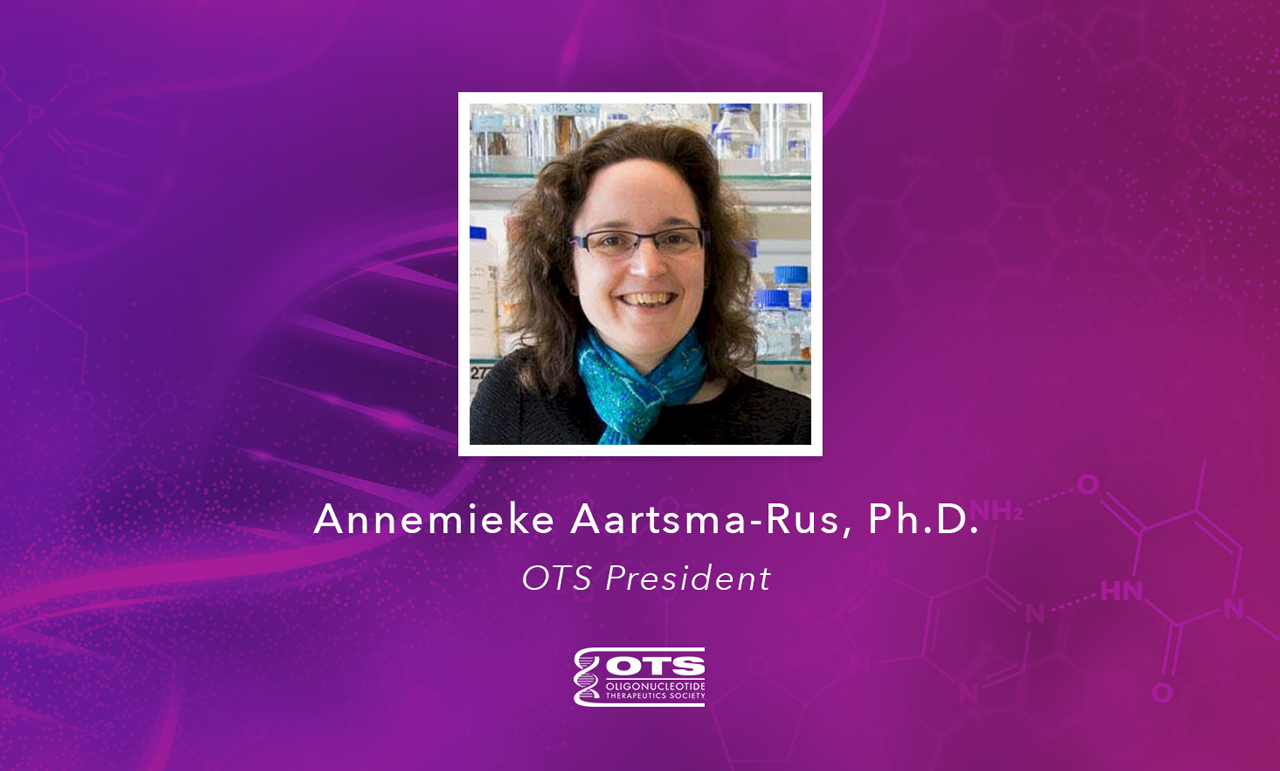
Looking for something?

This will be my last contribution that I write as President of our Society. On January 1st, 2022, I will become ‘Immediate Past-President’. David Corey (University of Texas, Southwestern) will take over as President and Richard Geary (Ionis Pharmaceuticals) will become the Society’s next President-Elect. As we delayed this rotation by one year, to come to terms with the pandemic-induced travel restrictions, I have had the privilege of serving the Board and the Society for the past 3 years.
I had never anticipated that I would one day be President of the Society when I attended the first OTS meeting in 2005 just after completing my PhD research. What struck me at the time, was how approachable everyone was. Big names I’d only seen on my favorite papers took time to attend my poster presentation and to answer my (probably) naive questions. Furthermore, the Board members stimulated and encouraged junior participants to contribute to the discussions. Another thing that stood out to me was that there was a 50/50 mix of academics and company participants. However, every talk was science driven and focused on data. When presenters talked about ‘target x’ or ‘chemical modification y’ they were told to either disclose the target or chemistry or to not present. This transparent approach and the focus on the junior members appealed to me and I decided to nominate myself as a Board member a couple of years later, still not thinking I would one day be President.
As is probably common upon a time of transition, I have been looking back to what has happened in the past 3 years. I had to double check, but in 2018 a mere 7 oligonucleotide therapies had received marketing authorization in the USA and/or Europe: a translation blocker (formiversen), an aptamer (pegaptanib), 2 RNase H oligos (mipomersen and valonesorsen), 2 splice modulating oligos (eteplirsen, nusinersen) and 1 siRNA (patisiran).
In the past 3 years, the number of approved oligonucleotide therapies more than doubled to 16, with an additional 3 splice modulating oligos (golodirsen, viltolarsen, casimersen), 1 new RNase H oligo (inotersen), 3 new siRNAs (givosiran, inclisiran, lumasiran), and 2 mRNA COVID-19 vaccines. The increase in approved oligo drugs was somewhat expected, given the number of clinical trials with promising results reported at prior OTS meetings. I am, however, personally still amazed by the speed at which the mRNA vaccines were produced (as covered in another blog), and happy that I have received both doses in the series.
I would also like to elaborate on the way the trainee OTS board members have contributed to OTS activities in the past years. We started with allowing trainee board members to attend the board as sort of an internship and preparation for future senior board roles in 2017. After evaluating, we again had slots for trainee board members in 2019. I think the best decision I have made as a president is to allow not 2 but 4 trainee board members to join (expanded to 6 in 2021). I am extremely impressed by what the junior trainees have achieved, including organizing a next generation session at each OTS meeting, producing regular webinars, and generating website content.
So, what will the future hold? Hopefully, an in-person meeting in 2022, though I dare not make any assumptions about this anymore. OTS does want to keep its focus on our next generation of OTS scientists and we are keenly aware that current students and postdocs may go through their entire project without ever attending an in-person meeting. I am very happy that our future President shares this concern, and we can promise that we will try our best to have in-person OTS meetings in 2022 in some form. I am grateful to have had this time serving as President of OTS and look forward to being part of the community going forward.


